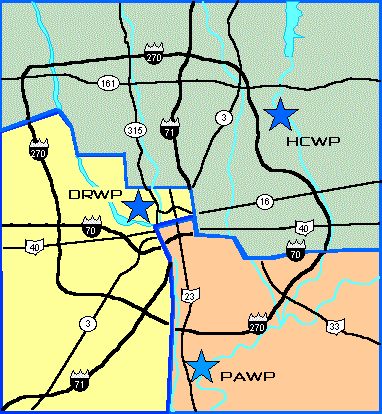Water Distribution System

Last year, the Division of Water delivered 53 billion gallons of drinking water, an average pumpage of 145.1 million gallons daily, to over 1.38 million residents of the Greater Columbus Area. NOTE: These figures are update annually in March/April.
The Dublin Road Water Plant (DRWP; the area to the left in yellow) utilizes surface water from the Griggs and O'Shaughnessy Reservoirs on the Scioto River and serves downtown Columbus, western, and southwestern Franklin County.
The Hap Cremean Water Plant (HCWP; the upper area in green) utilizes surface water from the Hoover Reservoir on Big Walnut Creek and serves OSU and the northern half of Franklin County.
The Parsons Avenue Water Plant (PAWP; the area to the right in orange) utilizes groundwater from wells and serves southeastern Franklin County.